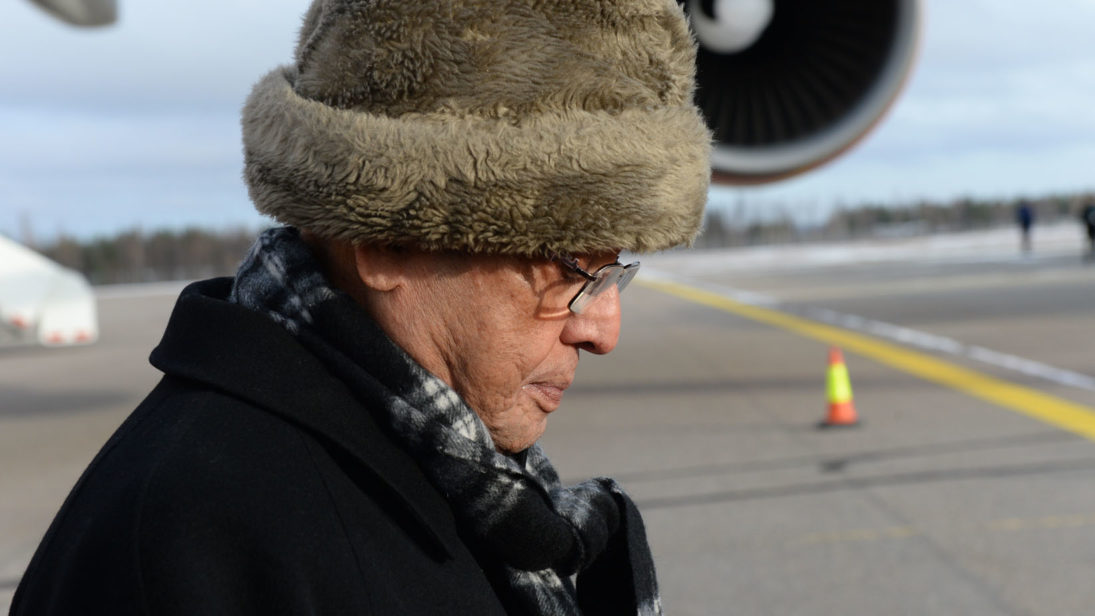
Located at the northernmost part of the world, the Arctic region increasingly falls within the paradigm of policymakers. It may seem distant, but the emerging situation in this ecologically sensitive region could have a huge impact on India. The attraction of Arctic oil and gas reserves, unexploited marine living resources and shorter shipping routes connecting the Pacific and the Atlantic Ocean is undeniable; the adversarial impact of the melting Arctic ice cap on indigenous communities, marine ecosystems, and aggravation of global warming is equally undeniable. India, being an agrarian economy, heavily depends on monsoons that are affected by any change in the Arctic.
India was accorded permanent observer status at the eighth ministerial meeting of the Arctic Council held at Kiruna, Sweden in May 2013. This move has given India entry to intergovernmental fora in the region, which is a positive development. Since then, India has been working meticulously to place itself in the strategic calculus of the region. This article seeks to articulate some of the reasons behind the Indian interest in the region—its increasing geopolitical interest and domestic compulsions.
India’s Increasing Geopolitical Interest
India’s engagement with the Arctic dates back nearly nine decades, to when it signed the ‘Svalbard Treaty’ in 1920. Thus it took nine decades for India to come in pace with China, Singapore, Japan, and South Korea, who were already active in the region. With this, it has also become important to increase visibility in the region. This will facilitate India’s assuming a lead role among Asian nations active in the Polar Regions. India has tried to intensify research activities in the Arctic region since time immemorial and is still seen to be doing that.
The approval of the acquisition of Polar Research Vessel (Ice-breaker, research-cum-supply vessel) by the Ministry of Earth Sciences at a total cost of Rs. 1051.13 crore within a period of 34 months by the Cabinet Committee on Economic Affairs, chaired by the Prime Minister Narendra Modi, is another landmark step and falls under India’s recent polar undertakings. This will help India widen the thrust on Arctic research disciplines undertaken through Indian Station Himadri, as such vessels can not only perform research and logistical tasks, they can also serve as a research platform for scientists to undertake scientific research in the ocean realm.
According to the reports by the United States’ National Snow and Ice Data Center, the Arctic has witnessed enormous depletion in its ice cover. The extent of ice cover on the Arctic has come down to 5.2 million sq km as of September 2014 from an average 7.2 million sq Km in 1979. This will very soon make the Arctic waters navigable. Therefore, being a maritime nation, India should work with the International Maritime Organization and take an active part in the development of the Polar convention for navigation. This can also serve as a means for employment for India’s skilled human resources and can bring a shift from the Asia-Pacific (much in trend) to Trans-Atlantic economies, where India needs to rework its strategic calculations.
Moreover, the Arctic has become a geostrategic hot spot with China’s engagement-cum-involvement in the region. China has sought to weaken India’s influence. Therefore, India fears its neighbour’s reaching out and playing against it in the region. The recent announcement by Jia Guide, Deputy Director General of the Department of Treaty and Law of the Chinese Foreign Ministry, stating that “China’s engagement in the Arctic is still in its early stage, and it is still exploring the best ways and areas to participate and play a constructive role in Arctic affairs” has further alarmed India.
Its Domestic Compulsions
The aforementioned phenomenon of melting ice may also add to the problem of global warming with its reduced capacity to absorb carbon dioxide. This worries Indian scientists, as they know that any imminent change in the Arctic is going to affect the monsoons in India, which may fall worst on the agrarian economy. This also results in thermal expansion, which increases the sea level, thereby allowing melted glacial water to flow into tributaries of Himalayan Rivers. This may fall worst on Indian coastal areas, leading to their submergence, affecting their transport system and power networks. Thus looking forward to the AHA moment (linking the Arctic, the Himalayas and the Antarctica) in the International dialogue on climate could be a case in point for India.
Furthermore, the Arctic is also crucial for India’s energy needs. India lacks primary resources of energy and has to look for sustainable sources of energy supply. The Arctic region has huge deposits of hydrocarbons and India wants to be more active in the exploration of the hidden treasure beneath the Ocean. Moreover, the same melted navigable waters could also be used for generating thermal energy with the temperature differences on the surface of this water and beneath.
The $400 billion Russia-China Siberian gas pipeline agreed last May will enable China to receive 38 billion cubic metres of gas annually from 2018. This seems to have wooed India to a great extent, which can be seen by the number of gas, oil, and energy MoU’s signed between India and Russia. These will serve as stepping-stones in the energy fulfillment of India’s energy needs.
During a recent visit, Indian President Mukherjee signed over a dozen pacts with Norway, stepping up cooperation in defence, science and technology, education, and other sectors. During the presidential visit, an Indian official stated that “India’s interests in the Arctic Region are scientific, environmental, commercial as well as strategic.”
Thus although India has already been involved in the Arctic, the need of the hour is not just involvement but engagement in the region. The Arctic has enough hydrocarbons to cater to India’s energy needs, but India does not have sufficient technical capability to undertake Arctic exploration. Furthermore, in order to advance its stakes in the Arctic, India must establish increased bilateral dialogues with the Arctic littorals.
***